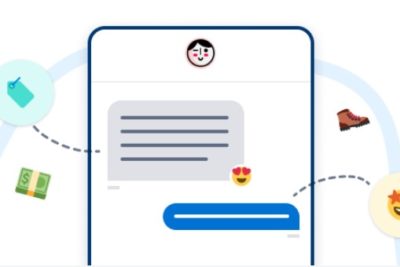Keeping an eye on your inactive subscribers might be just as important for your email marketing as growing your list. Not only is it easier to sell to people who already know you and have shown interest in your product in the past, but it’s also crucial to keep them engaged with your emails to safeguard your reputation as a sender.
Low engagement rates can seriously damage your sender reputation and deliverability rates, making it harder to reach even those subscribers who were still reading your newsletters.
But how do you re-engage inactive customers effectively? How do you revive a cold email list and how do you put together a successful win-back campaign? We’ve compiled a list of tactics you can start using today.
How to set up an email to inactive customers
Before you dive into these tactics, it’s important to segment your inactive subscribers into a separate “dead email list” as you’ll only be sending your re-engagement campaign to them. Check the knowledge base of your email service provider to find out how you can create a segment with inactive users.
Some ESPs allow you to select inactive subscribers with just one click, but following this method, you’re dependent on the ESP’s definition of an inactive subscriber. Ideally, you’ll set the period of time (three months, six months, …) someone hasn’t engaged with your emails for them to qualify as inactive yourself.
Re-engagement campaigns can consist of a single email or a larger sequence using one or more of the strategies listed below.
How to re-engage inactive customers
1. Personalize your emails
If you’re sending the same emails to everyone on your list, chances are some people are going to lose interest and will stop engaging. They may have signed up when they bought one specific product or because they wanted to know more about a special offer.
Look into the data that you have and send them an engagement email that matches their past behavior. This could be a discount for a product they’ve bought several times or recommendations based on their purchase history. When you cater specifically to their needs and interests, there’s a bigger chance they’ll come back to buy from you.
Don’t have a lot of data on them yet? Go get it! Asking questions is one of the best ways to engage your subscribers and source the information you need to send them customized emails. Put together a fun quiz, a quick poll, or an easy survey to re-engage past customers with.
2. Give them the chance to choose
The best way to re-engage inactive subscribers is by giving them what they want. If you don’t know what that is, send them an email that gives them various topics to choose from, and make sure you have an email sequence ready for each of these topics. That way, you’re segmenting your subscribers based on their interest and making sure they’ll only get content they’re likely to interact with.
Aside from letting subscribers choose the topics they receive emails about, you can also allow them to change the frequency of these emails. It might just be that your inactive customers are a little overwhelmed by their overflowing inbox and that’s the reason why they haven’t been reading your newsletters.
Note that an important part of making this and other tactics work is having subject lines that will spike their curiosity so that they actually open the email and make their choice.
3. Remind them of why they signed up
If you don’t email your customers regularly, they may forget why they subscribed to your newsletter and thus also why they should keep reading it.
To remedy this, you could send them an email with practical information on how to get the most out of the product they bought or with content similar to what they were reading on the page they signed up from.
Alternatively, remind them of the benefits your brand has to offer and repeat the marketing message you use to get new signups across your website, social media, and ads.
4. Create a sense of FOMO
Another way to re-engage email subscribers is to let them know of all the great things that have been going on since they last engaged with your emails. Maybe you reached a milestone number of followers on social media, launched a new product, or added new features to your website.
Nobody wants to miss out on something great, and creating a fear of missing out can be enough to make inactive customers come back to your shop.
This tactic works especially great if you can combine it with showing off how many people already use your product. You could even include some testimonials or customer photos in your email.
5. Retarget your inactive customers on Facebook
Re-engagement emails only work if your past customers actually open them, so what if they don’t? How can you get them to pay attention to you again? Facebook is the answer.
Facebook lets you upload a list of subscribers to create a custom audience so you can then target that list with ads. It allows you to get seen by people who haven’t opened your emails in months.
Furthermore, you can customize these ads based on the last action your past customers performed to increase familiarity and entice them to click.
&bnsp;
6. Ask them to update their details
Primary email addresses change and people may spend more time on social media than in their inboxes. Ask your inactive email subscribers to update their contact details, so you are emailing their primary email address.
You can also ask subscribers to start following you on social media or even to download your app and get mobile notifications. This way, even if they do decide to unsubscribe from your list, you’re creating new opportunities to keep them engaged with your brand.
7. Reference their non-engagement
This last one is a little more ballsy, but it’s also the most transparent. You can simply let your inactive customers know that you’ve noticed they haven’t been engaging with you and ask them if they still want to get your emails.
Want to take it a step further? Let them know you’ll be removing them from your list on Day X if they don’t click the button to stay subscribed. Send them a follow-up email a few days before, and then another one right before removing them from your list as a final reminder to stay subscribed.
What should you do with inactive subscribers?
If all of the above doesn’t work, it may just be time to let go. There is no point in holding onto (and oftentimes paying for) subscribers who aren’t interested in what you have to offer them, especially as doing so may hurt the overall performance of your list.
So do you simply delete them?
When they’re clearly beyond saving, that’s the best course of action. Just make sure you make a backup of their records (in compliance with all privacy regulations) before you do so if only to make it a little less scary.
Once you’ve completed the purge, you’ll see your open rate and click-through rate go up and your deliverability rates may even improve as a result of that. Going forward, you can focus your email marketing on subscribers you know are interested in what you have to say.
Set up a re-engagement campaign today
There are various ways to re-engage inactive subscribers and you’ll want to test what works best for your brand. Keep in mind that the better you can attend to your subscribers’ interests, the more likely you’ll get them to click again. If truly nothing seems to work, accept that they probably aren’t part of your target audience and cut them loose.
Need more inspiration? See exactly how your competitors are re-engaging their customers by exploring emails from 1000s of brands when you sign up for MailCharts.
Editorial photo by Artem Bryzgalov on Unsplash





